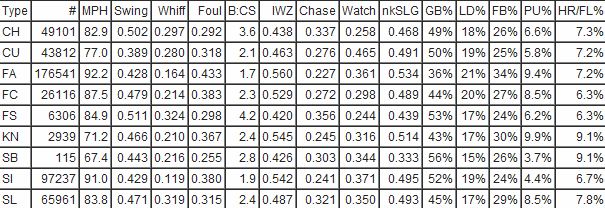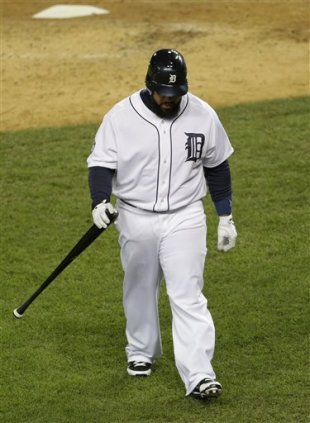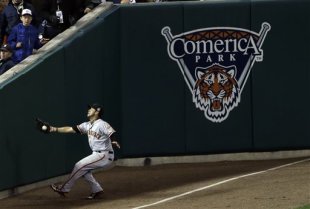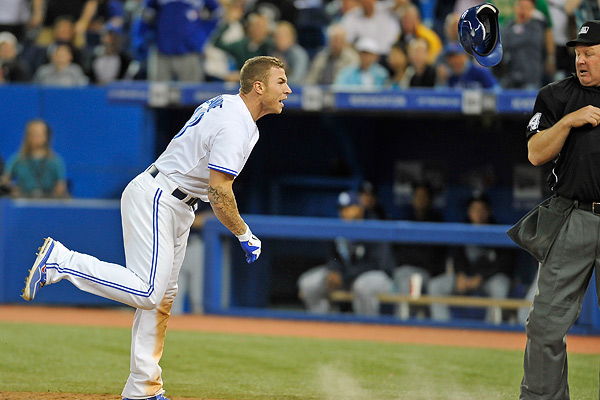Sadly, this news report and I'm sure the police report sounds like some of the ejection reports I write after baseball / softball / basketball games. Many times they include the phrase "this guy is going to get your league / school in the papers, in a way you don't want".
It's been getting worse over the past couple of years, especially in this area, which is disheartening. Some of it, I attribute to the devastating economic downturn. You could see it coming.
But a place that for some -- especially kids -- should be a sanctuary from lifes daily frustrations, has become a place where man-kicks-dog and frustrations built elsewhere (on the job, in school), boil over.
The Field of Dreams turns into a Field of Nightmares and while I don't pretend to have all the answers one thing I do know is this cannot continue.
from the Daily Herald:
http://www.dailyherald.com/article/20121029/news/710299720/
After his daughter was benched at a regional match, a Lisle man threatened to kill a high school volleyball coach and rape the man’s family members, prosecutors said Monday.John Kasik, 61, also is accused of battering Lisle High School Athletic Director Dan Dillard during a confrontation at school offices.
Authorities said Kasik’s temper flared after his daughter was pulled from a volleyball match that her team lost on Thursday. Afterward, he followed Dillard’s vehicle, pulled up next to him and began shouting about the game, said DuPage County State’s Attorney Bob Berlin.
Dillard invited Kasik to discuss the issue at school the following day. But Kasik went home and left numerous text messages and voice mails threatening Varsity Volleyball Coach Matt Hrubesky, Berlin said. The messages continued for about five hours, from 9:30 p.m. to 2:30 a.m., according to police.
“He left voice-mail messages telling the coach he’s going to rape his wife and daughter and kill him,” Berlin said.
Kasik arrived at the high school the following morning for a meeting that quickly turned hostile, according to the charges. At one point, Berlin said, Dillard tried to end the discussion but Kasik blocked the athletic director’s path out of the office and “bumped” him repeatedly.
Kasik could face up to three years in prison if convicted of felony harassment. Berlin said the case was charged as a felony rather than a misdemeanor because it involved a death threat.
“It’s unfortunate when parents react this way and take their frustrations out on school personnel,” he said. “We will protect these people so they can do their jobs and not have to worry about these kinds of threats.”
Kasik has no prior criminal history in DuPage, according to court records. He is scheduled to appear Nov. 19 before Judge John Kinsella.




 Disturbing as they are, Chicago-area sports medicine expert Krystian Bigosinski believes current statistics may understate the problem.
Disturbing as they are, Chicago-area sports medicine expert Krystian Bigosinski believes current statistics may understate the problem. A more immediate reason for alarm is second-impact syndrome, in which an athlete suffers a second concussion while still recovering from a previous one. Though the precise physiological cause is uncertain, the outcome is not: the brain swells rapidly and catastrophically, causing severe disability or death. Case in point? Jaquan Waller, a high school running back from Greenville, North Carolina, who in 2008 suffered a concussion in practice, played in a subsequent game and died after enduring a second hit. A year later, a national survey of high school trainers found that more than 40 percent of concussed athletes return to play too quickly, and that 16 percent of players who lost consciousness after being hit returned to the field the same day.
A more immediate reason for alarm is second-impact syndrome, in which an athlete suffers a second concussion while still recovering from a previous one. Though the precise physiological cause is uncertain, the outcome is not: the brain swells rapidly and catastrophically, causing severe disability or death. Case in point? Jaquan Waller, a high school running back from Greenville, North Carolina, who in 2008 suffered a concussion in practice, played in a subsequent game and died after enduring a second hit. A year later, a national survey of high school trainers found that more than 40 percent of concussed athletes return to play too quickly, and that 16 percent of players who lost consciousness after being hit returned to the field the same day.
















